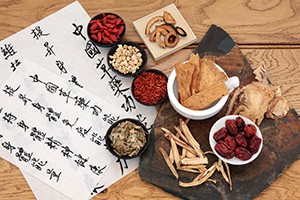Introduction to medical qigong and paidagong

Paidagong utilizes tapping and patting to break up regions of qi obstruction in body tissues and energy pathways or meridians in the body.
by Steven Cardoza —
For thousands of years, the Chinese have developed and refined their medical system and other types of health-building practices. Some, like acupuncture, herbal medicine and taiji (tai chi) are becoming increasingly familiar to Westerners. Others are less well known, but equally effective in their own ways.
Qi, your body’s life energy, can become obstructed from numerous causes, including injury, prolonged emotional states, environmental factors, poor diet, and from the side effects of many medications and recreational drugs. This obstruction causes most types of pain and reduces functionality.
Here is an introduction to two modalities that you may not have heard much about. The first, medical qigong, requires professional assistance if you choose to utilize it. The second, paidagong, is one you can easily learn to apply on your own.
Medical qigong
Medical qigong comes in two basic varieties. The first type is qigong that you can do to improve your own health. Some techniques benefit the health of the body in general ways; others are designed to address specific organs, meridians and imbalances that manifest as distinct and definable disease conditions.
For a targeted health concern, it is necessary to be taught by an accomplished practitioner who is a good diagnostician, or one who has been given your diagnosis by a physician of Chinese medicine.
The second type involves treatment by a highly accomplished qigong practitioner who has been trained as a medical qigong doctor to emit qi from the hands to heal a patient. Although this may sound far-fetched to someone unfamiliar with qigong, numerous studies have documented objective changes in pathogenic microorganisms in vitro, as well as in sick animals and humans on the receiving end of emitted qi, also called wai qi.
Additionally, significant measurable changes are seen in the intensity and type of radiant bioenergy (infrared, infrasonic, electromagnetic and others) given off by the hands of qigong doctors when they are emitting qi.
Because qigong healing works in ways similar to acupuncture, a qigong doctor must have a comparable medical understanding of the body as any other Chinese medical doctor. The qigong doctor influences the energy of the patient directly, without using needles, by using the technique of wai qi. The doctor may use his own qi or draw on qi from environmental or universal sources. By manipulating the qi of the patient’s body in specific ways, energetic balance is restored, and physical, emotional and mental healing occurs.
Medical qigong is also effective preventatively, since deviations in qi flow and areas of excess or deficiency can be directly perceived and remedied even before a physical disease manifests from the underlying energetic problem. Preventing the onset of disease is the hallmark of the highest levels of all Chinese medical practices.
Paidagong
I once taught one of my patients some paidagong as part of his treatment. Despite having studied taiji and qigong for many years, he had never heard of paidagong. He was also quite a world traveler. After I showed him the paidagong, he said, “Oh, I have seen people doing that while walking the streets of Hong Kong and Beijing. I never knew what they were doing.” Here is what it is and what it can do, followed by a simple practice you can try.
Paidagong utilizes tapping and patting to break up regions of qi obstruction in body tissues and energy pathways or meridians in the body. Tapping creates waves of vibrational energy through a targeted body part or along a meridian pathway that frees up bound energy. The usable portion may then be diverted back into healthful purposes, while the unusable pathogenic qi will be released from the body. In that way, pain is reduced, functionality is improved and a person feels energized by having access to more usable qi.
Paidagong can be used on targeted acupoints as a type of acupressure. A Western practice, the Emotional Freedom Technique, is a type of tapping acupressure using fingertip taps on a few acupoints aimed at releasing tension and relieving stress.
Here is a simple paidagong for you to try. We will focus on your forearm, but the technique can be used any place your body feels tight or achy. Make a soft fist with your right hand, as though you are holding a small bird’s egg that you do not want to break. Hold your left arm in front of you with the palm up and bent at the elbow.
Starting just below your elbow crease, tap and pat with your right fist, gently yet firmly. Direct the force of the tap toward the bones in your forearm, and gradually move your tapping fist toward your wrist. Repeat up and down your forearm a few times until it feels looser and more comfortable. Then turn your left palm downward and repeat a number of times on the back of your forearm. That is all there is to it.
If you like this practice, different variations and more detailed instructions can be found in my book, Chinese Healing Exercises, along with many other types of healing practices you may enjoy.
Steven Cardoza, M.Sc., L.Ac., holds a Master of Science degree in Traditional Chinese Medicine, is a licensed acupuncturist and herbalist, as well as a certified instructor of Wu style taiji and numerous styles of qigong. He is the author of Chinese Healing Exercises and its companion DVD. daoist1@dslextreme.com or compassionate-arts.com.
Reprinted from AzNetNews, Volume 34, Number 4, August/September 2015.





August 26, 2015
August/September 2015, Featured, Qigong